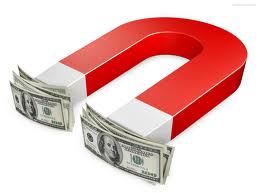 It’s no secret that backlinks play a direct role in a website’s search engine rankings. Even with all of the Panda, Penguin and Hummingbird updates Google’s made to their algorithm, backlinks remain a fundamental metric in determining how, and where, a website should rank. But how exactly do you encourage other webmasters to link back to your site?
It’s no secret that backlinks play a direct role in a website’s search engine rankings. Even with all of the Panda, Penguin and Hummingbird updates Google’s made to their algorithm, backlinks remain a fundamental metric in determining how, and where, a website should rank. But how exactly do you encourage other webmasters to link back to your site?
The Importance of Backlinks
A 2013 study performed by SearchMetrics.com found the number of backlinks to be the third most influential factor in a website’s Google ranking. The only factors which held greater weight were Google +1s and Facebook shares. While other factors continue to fluctuate over the years, backlinks remain a solid indicator of a website’s authority.
On a side note, the SearchMetrics.com study found a decrease in the SEO value of keywords in domain and tile.
Can I Buy Links From Other Websites?
You don’t have to search very hard to find websites selling links. Whether it’s a contextual link placed in one of their posts or a link placed on the sidebar, there are literally thousands of websites eager to sell their digital real estate. However, buying links is generally frowned upon and viewed by Google as a deceptive technique used to manipulate a site’s ranking; therefore, buying links could send your site tumbling down the rankings rather than helping it rise to the top.
Google states that “Buying or selling links that pass PageRank. This includes exchanging money for links, or posts that contain links; exchanging goods or services for links; or sending someone a “free” product in exchange for them writing about it and including a link” may negatively impact a site’s ranking in the search results.
Let The Backlinks Come To YOU!
Rather than playing a game of Russian Roulette with paid backlinks, a smarter approach is to focus on building web content that other webmasters actually want to share and link back to. After all, you can’t expect others to link back to your site if it’s filled with sub-par content.
The key thing to remember when creating content for your website is to focus on quality, not quantity. Long gone are the days where publishing a 500-word generic article will suffice. If you truly want to leave a positive, lasting impression on your visitors, you must provide them with content that’s better than your competitor’s. Whether this means spending several days writing an extensive how-to article on a particular subject, or outsourcing the job to a professional, the bottom line is that you need helpful, informative content on your site to attract links.
Tips on Creating Killer Link-Attracting Content
- Avoid writing long walls of text; instead, write easy-to-digest content that’s broken into small paragraphs using sub-headings, bullet-point lists, etc.
- Incorporate images and/or video into your content for better engagement.
- Don’t be afraid to link to relevant, authoritative sites in your content.
- Publish interesting facts and statistics (fact: people love to read them).
- Encourage visitors to share your content on their social media accounts.
Infographics Are Natural Backlink Magnets
Don’t you love viewing pretty infographics that are filled with interesting data and statistics? The human brain is wired to respond more actively to visual graphics than plain text. Sure, you can convey statistics about a particular topic in a text-only article for your website, but you’ll get a stronger response, and hopefully backlinks, by incorporating these statistics into a visual infographic.
If you really want to turn your infographic into a backlink-generating tool, you should create a custom embed code for other webmasters to use. By publishing the infographic’s embed code on your site, other people can grab the code and easily insert it into their own site’s HTML. Not only is this easier, but it also ensures that anyone using your infographic links back to your site.
Siege Media has a free, easy-to-use embed code generator on their website. Just go through and fill out all of the available options, including site name, post URL, image URL, image alt, size, etc. Upon completion, you’ll receive an embed code for your infographic to offer visitors. Insert the code around your infographic (preferably at the bottom for maximum visibility) and watch the backlinks roll in.
Case Studies
Another type of content that webmasters love to link back to are case studies. For instance, marketing companies frequently publish case studies about Google Adwords or Facebook Ads, revealing whether or not a particular ad copy worked. Even if the case study fails to turn a profit, this doesn’t necessarily mean it’s a total failure. Publishing a non-profitable case study on your site may attract links from other websites, as it shows them what not to do.

